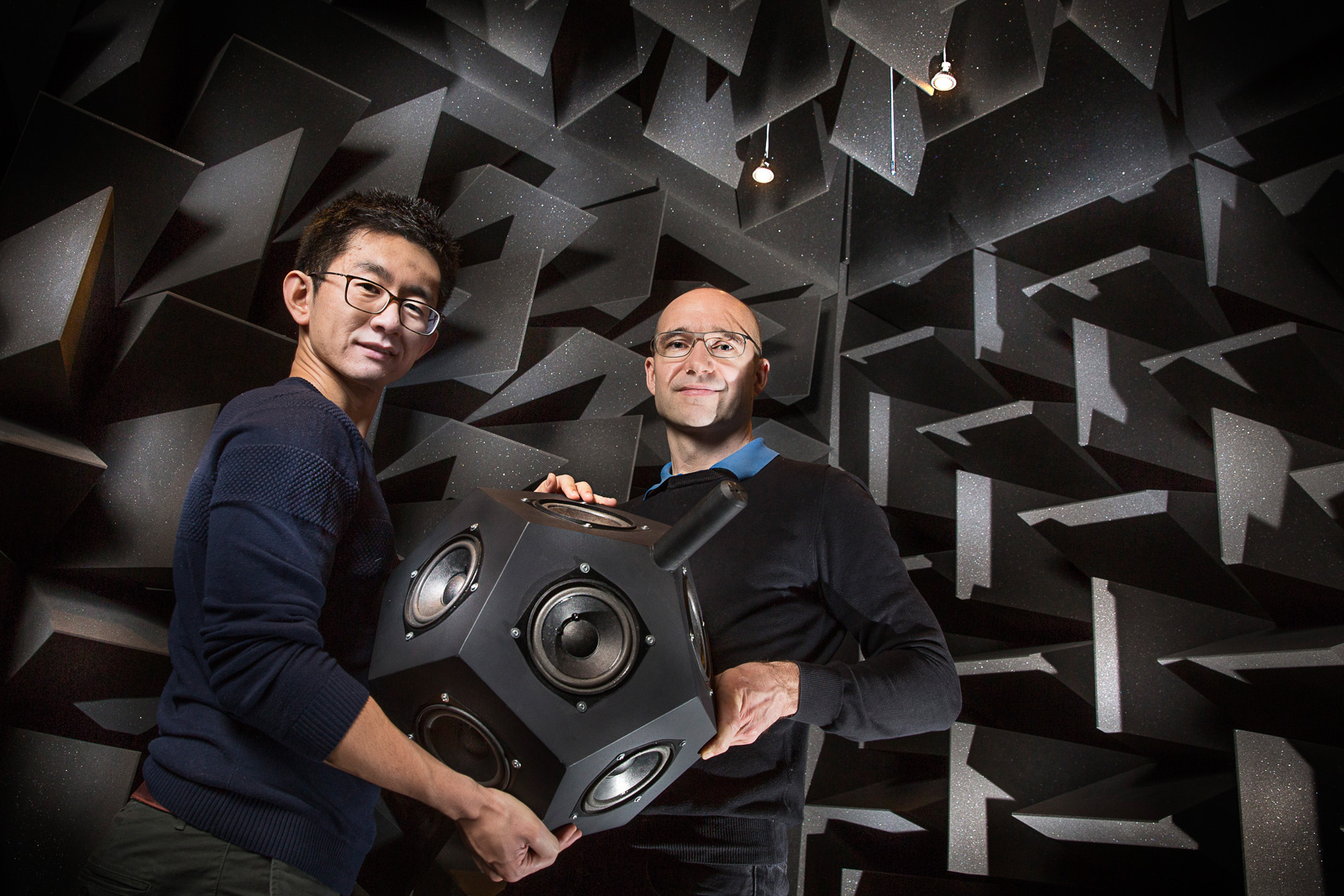Sound zones on the way to the living room
Aarhus University has entered into a collaborative agreement with one of the world’s major manufacturers of speakers. The aim is to fully develop a new technology that can make it possible to divide our homes into sound zones.

Dad sits on the sofa listening to jazz, mum streams her favourite radio programme and junior turns up cartoons on TV, while baby sleeps undisturbed in a cot. This all takes place in the same room and can become a reality with the help of sound technology that is now on its way to the living rooms of private consumers.
In the acoustic laboratory at Aarhus University, researchers have been experimenting with dividing rooms into sound zones and defining the direction of the sound waves from the speakers so precisely that they do not disturb each other.
This means in practice that the sound zones can be located side by side in even a very small room. It is all made possible by means of advanced signal processing, according to Assistant Professor Jakob Juul Larsen, Department of Engineering, Aarhus University.
“We do it by calculating exactly how much sound needs to be delayed in each of the room’s individual speakers in relation to the sound from the other speakers. This makes it possible to create both quiet zones and sound zones side by side,” he explains.
Researchers cancel out sound in the laboratory
In recent years, the researchers have been experimenting with directing sound waves from the speakers so they criss-cross each other in different directions. They use the same technology we are familiar with at museums or supermarkets, where the sound is directed towards a particular position.
This could be a museum visitor contemplating a work of art and getting audio-based information about the exhibition, or a customer receiving a message about a special offer.
However, the major engineering challenge is not pointing the sound in a specific direction, but getting it to cut off again.
This is actually crucial for ensuring the technology will work in a small room with sound zones that interface with each other.
“In a room with a number of sound zones, we must be able to control the sound very precisely in all directions, and we must also be able to stop the sound very suddenly so that it can’t be heard in the next sound zone. This means that we have to work with a concept called antiphase, where one sound wave can cancel out another,” says Dr Larsen.
Two sound waves in perfect antiphase cancel out each other and provide complete silence. The researchers will use this principle in their work with sound zone speakers for the home.
A difficult task
For the time being, the technology is not sufficiently advanced that any companies dare risk providing sound zones for the private customer segment. However, research into signal treatment has now reached the stage that the Chinese company Goertek Inc. has chosen to invest in a three-year development project in collaboration with researchers at Aarhus University.
“We hope to succeed within a few years in creating a perfect sound zone experience, so we can have pure sound zones in a room while it’s still possible to hold a conversation without being disturbed by the acoustic image from the speakers,” says Development Director Jan Abildgaard Pedersen, Dynaudio A/S, which was bought out by GoerTek last year.
A number of speaker manufacturers have previously launched commercial products with zoned audio systems for cars, but nobody has yet found a solution to how the technology can be used in rooms where the listener does not remain in one particular position in relation to the speakers but, on the contrary, moves around.
The researchers will now continue working on the signal treatment so that the new speaker technology will be safe from errors and able to be moved from the laboratory into the living room.
Providing all goes well, of course, according to Dr Larsen.
“The speakers are permanently mounted on metal tracks in the laboratory, the researchers are familiar with the room, and the listeners sit with their heads virtually in a vice. But how will this set-up work in the home, where the geometry of the rooms and the sound reflection conditions vary? The sound zone technology must be able to adapt to individual rooms and work in real time, even when consumers move their furniture around,” he emphasises.
KONTAKT
Jakob Juul Larsen, Department of Engineering , Aarhus University
Jan Abildgaard Pedersen, Development Director/CTO, Goertek Inc., Mobile: +45 5196 0349
